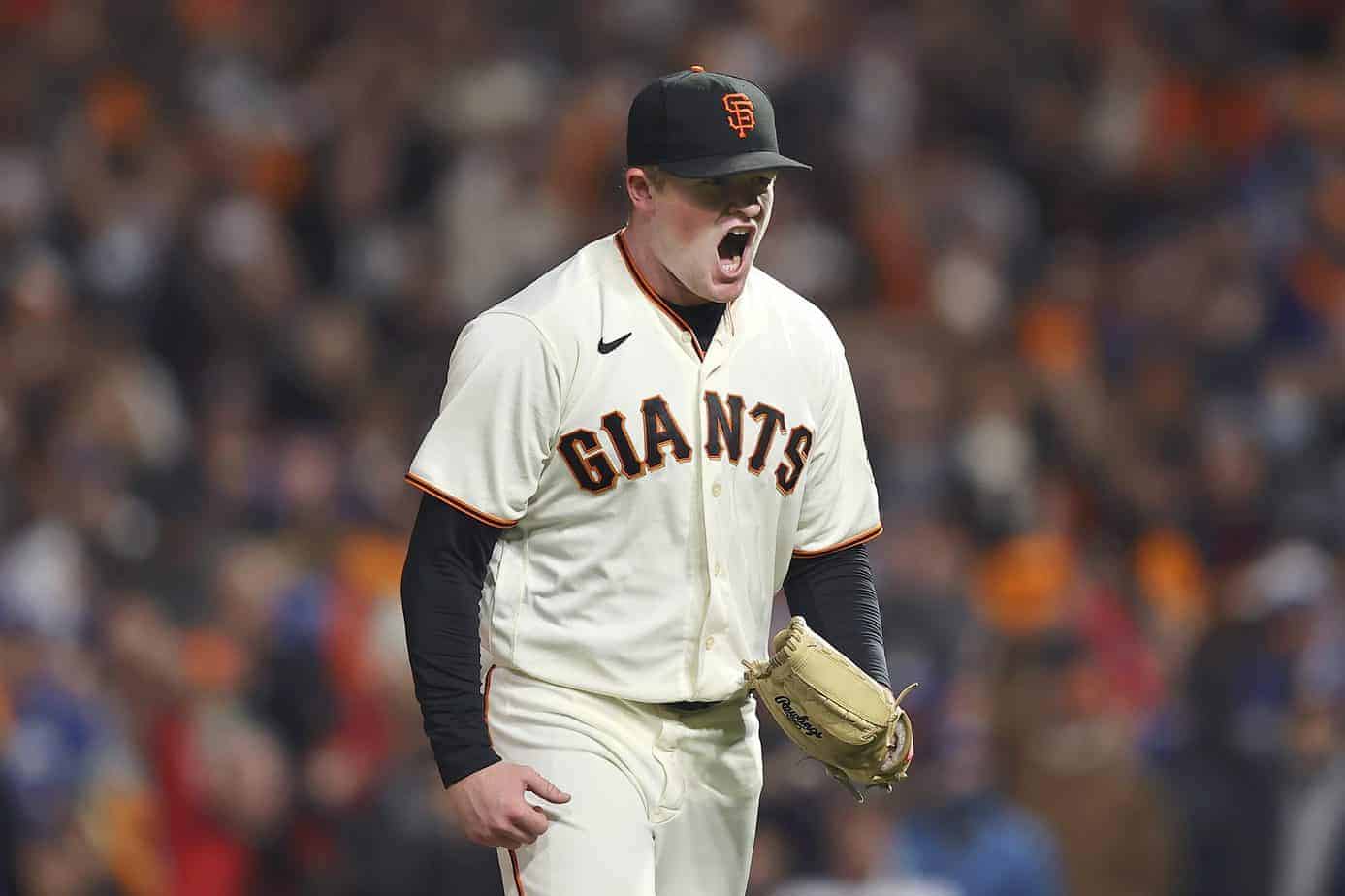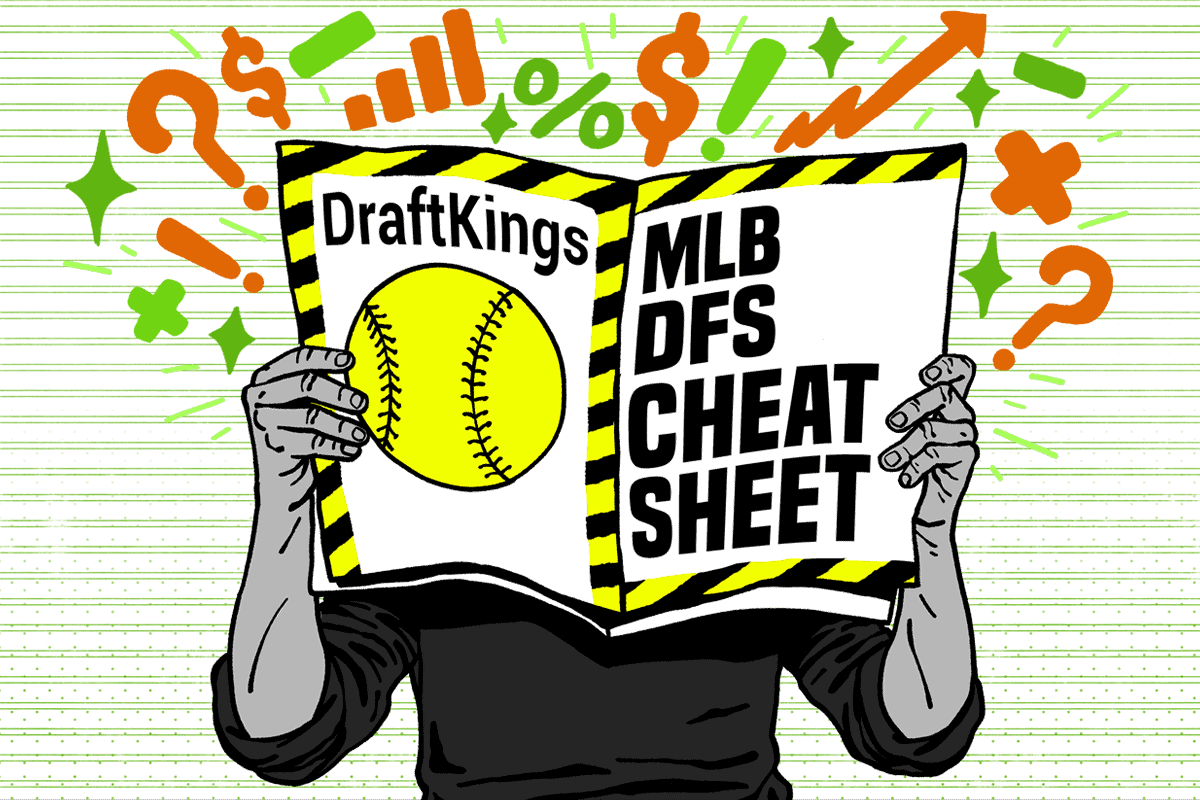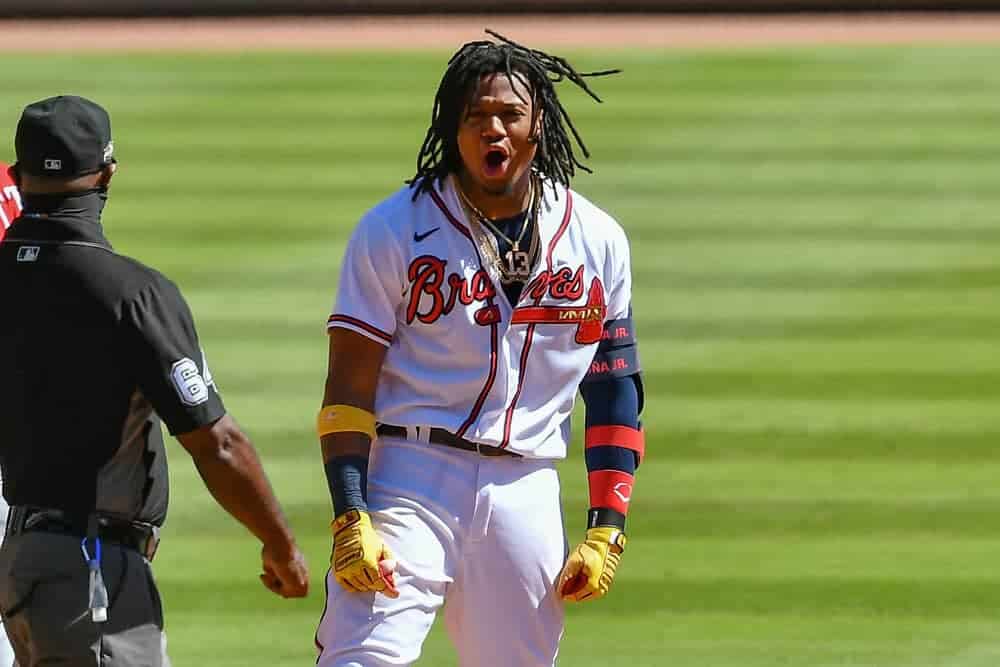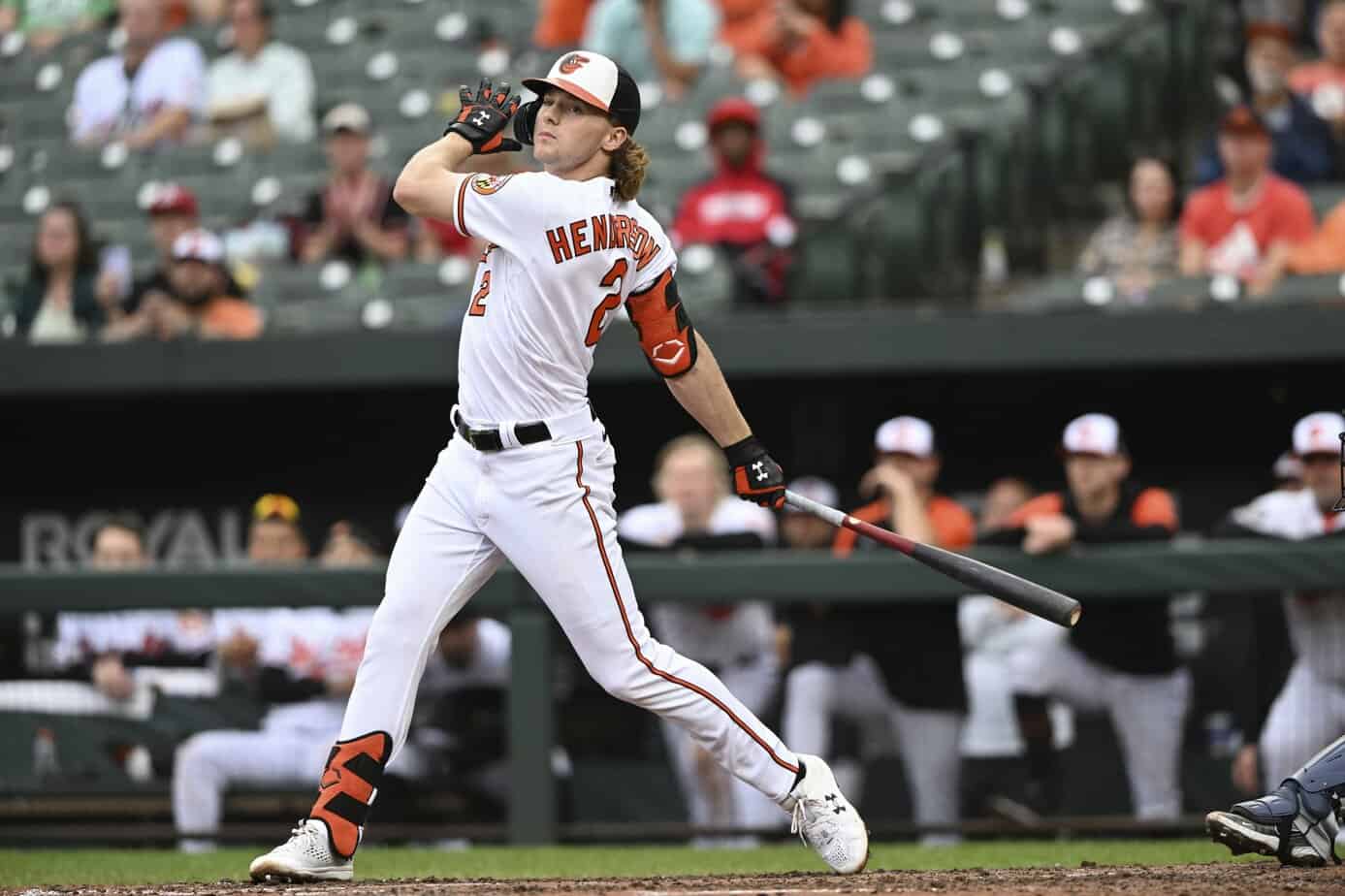Welcome back to MLB DFS! You can be forgiven if you feel like you’ve forgotten everything you knew about this MLB season back when we were deep into Spring Training and season-long draft time. We’re here to help you catch up quickly as we launch into the absurd, interesting and, hopefully, enjoyable 60-game season that MLB has granted us.
This will be a multi-day series looking at general changes in the game and the approach to MLB DFS as well as meaningful changes to rosters, pitching options and stack makeup. Between all the forgotten offseason transactions and some significant changes to injury status following the delayed start to the season, there’s a lot to refresh.
Rule Changes & Impact
COVID-19
Throughout the season we will no doubt have to keep a close eye on in/out status based on changing diagnoses of COVID-19 for players who have already tested positive and players who no doubt will as the season progresses.
On the COVID-19 front, the league is moving full steam ahead with its plans to play a season that includes multi-city travel and, in some cases, potentially even fans in the seats. It’s difficult to gauge the impact that any fan presence will have on a player’s likelihood to later test positive. South Korea’s KBO has been playing games since early May, but they are yet to allow fans despite minimal rates of positive tests in that country. On the field, the league has set numerous rules and guidelines for player interactions to limit potential spread and encourage social distancing.
Changes that should not impact the on-field MLB DFS performance include rules banning spitting (saliva, sunflower shells, tobacco, etc.) as well as a ban on high-fives, hugs and celebrations that do not maintain a six-foot distance, set in place for safety reasons. An additional rule creates an immediate ejection and potential suspension for “any player or manager who leaves their position to argue with umpires, come within six feet of an umpire or opposing player or manager for the purpose of argument, or engage in an altercation on the field.”
Other oddball rules include pitchers being allowed to carry a wet rag to the mound so that they can avoid licking their fingers. The rag can’t be touched while on the rubber and a pitcher must dry his hand visibly before touching the baseball. MLB made a specific point to state that the only substance allowed on the rag is water, but this is absolutely going to be an issue at some point.
https://www.youtube.com/watch?v=3FXVgHhHufE
Players will also be responsible for their own equipment in the on-deck circle as well as in the field or on the basepaths. Pitchers will have their own individual rosin bags and fielders are even discouraged from throwing the ball around the horn after an out. It’s going to be a strange product.
The league will not be playing games in a bubble and we’ve already seen players depart from and return to camps following testing and recovery. MLB’s rules about contact are relatively lax. Players will be among the general public, and, while public transportation is restricted, they will be allowed to utilize ride-share services, just as one example of potential points of exposure.
During the season, players and team personnel will be tested for COVID-19 every other day. Anyone exhibiting symptoms, testing positive or even having experienced confirmed exposure to the disease will not be allowed to participate in team functions or travel until they have tested negative twice in a row and have exhibited no fever for at least 72 hours. MLB has created a special injured list for COVID-related absences. Players do not have to test positive to be added to the list, and exposure can be treated the same as a positive test. It’s going to be important to monitor player status so you can adapt on the fly in your MLB DFS lineups.
The 60-Game Sprint Schedule
The most obvious change to league structure brought on by the global pandemic was, of course, to the length of the season. With only 60 games on the schedule, the entire league is up for grabs, and we could see some strange statistical outliers. The schedule has been structured to favor divisional and regional play, with each division playing its inter-league counterpart to limit travel. The short schedule will also result in just six off days for each team, which should create a ton of MLB DFS action but also might force players in and out of lineups for rest purposes.
Each team will still play a total of 20 inter-league games this season, a full 33% of the schedule. This means inter-league play will represent a much larger portion of a team’s schedule when compared with the roughly 12% it typically comprises. The impact in National League parks will be minimized by the presence of the designated hitter in both leagues this year, however. In addition, the league has created a schedule in which each team will play its “rival” team from the other league — think Yankees vs. Mets, Cubs vs. White Sox, etc. — a total of six times, or a full 10% of the games on its schedule. The remaining 40 games will be played against division opponents, increasing the percentage of in-division games from 47% to 66%.
The proportions of games against these specific opponents will benefit some teams in the standings and in fantasy performance more than it will others. Pitchers will benefit from facing weak offenses and avoiding powerful teams. This is true for the better teams in the Central Division in both leagues, where the top pitchers should be able to tear through weak lineups, while not playing the elite teams from either coast. On the hitting side of things, teams will be playing disproportionate numbers of games in stadiums with either good or bad park factors. The NL West might have Coors Field, but the other stadiums have suppressed runs on average over the last three years. With a higher proportion of games coming in those parks, the impact to scoring will be worth considering.
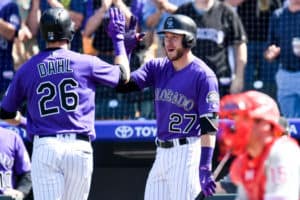
An additional wrinkle MLB DFS owners need to consider could come in the form of relocation. Over the weekend, the Toronto Blue Jays were denied permission to play their games at their home park due to COVID-19 restrictions. The Blue Jays are yet to announce where they will be playing those games. The leading candidates are currently their spring training facility in Florida or their AAA affiliate’s stadium in Buffalo, N.Y., which is significantly closer to their home market but still on the wrong side of a closed border. The impact of completely changing ballparks will be obvious and worth looking at once things have settled further. As things continue to develop in numerous states, with important MLB states like Florida, Texas and California considering re-entering a lockdown phase, stadium residency could shuffle quickly.
The schedule could also have an interesting impact on strategy. With significantly fewer games on the schedule, wins will be at a premium and it stands to reason that starting pitchers will be on extremely short leashes throughout the season. Back-end bullpen arms should see even more usage than the already increased rates at which they have appeared in recent years, with managers looking to consistently put their best arms in high-leverage spots to secure precious wins. The number of openers we see used in games could also increase as the trend continues to catch on with more analytically savvy teams.
Roster Rules
Roster rules have been revised as well. There will be no minor league season at any level this year. Instead of having farm teams, each franchise has designated a pool of 60 players from its organization as eligible for 2020. For the first two weeks of the season, teams will be allowed an active roster of 30 players with no restrictions on how roster spots are allocated. After the first 15 days of the season, the roster sizes will be reduced to 28, and they will shrink further to 26 after another 15 days. As an added wrinkle, teams will be allowed to add a 27th man for any double-headers all season long.
The additional roster spots for each team should further support heavy bullpen utilization, and some teams have openly discussed the notion of a six-man rotation, further diluting the value of all but the most elite starting pitchers. MLB DFS players need to familiarize themselves with the makeup of team rosters so there are no surprises when lineup changes are announced.
With teams able to add a few extra bench players to the roster, we can expect to see teams utilize defensive replacements late in games on an increased basis early in the season, although this is difficult to quantify for DFS purposes. The extra few bats and tight schedule could provide significant value on slates throughout the season, however, so it will pay fantasy owners to familiarize themselves with team rosters from top to bottom.
Important On-Field Changes That Will Impact Scoring
There are more significant changes to the game that were made to accommodate the unique situation teams are facing, as well as to serve as a test for changes that may eventually be made in the name of speeding up the game. The questionable decision to make changes to the game to cater to casual fans who bemoan the length of a game fails to appreciate that the average NFL game is the same length, with both sports clocking in around three hours and 10 minutes on average over the last few years. And MLB doesn’t cut its broadcast to commercial every 38 seconds — there’s objectively more game action.
MLB is attempting to solve this by implementing a rule by which extra innings will begin with runners at second base. According to MLB’s scoring, this runner will be counted as someone who reached base on an error, though no defensive error will be charged to the team in the field. That would mean that if this runner scores the pitcher is not charged an earned run, but the run and the RBI will count for MLB scoring and for DFS purposes.
While we know that a runner starting an inning on second base with no outs will score roughly 60% of the time, predicting the impact of this rule change game to game is futile. We can never know in which games we’ll get extra innings, nor will we be able to predict where in the lineup those free baserunners will come from. By rule, the final out of the previous inning will be the runner to take second base, so conceivably a hitter late in the lineup in a low-scoring tie game could receive a minor bonus in that opportunity, but you can’t predict when it will happen.
Roughly 8.6% of MLB games went to extra innings in 2019, which is in-line with the five-year average, meaning this rule will have minimal overall impact to scoring, but when it happens you can definitely expect to see angry Tweets from people who lose GPP positioning.
Speaking of things that make DFS owners pull their hair out and throw their phones across the room, rainouts might cause some confusion early on this year. MLB made a dramatic change, declaring that games that have not reached the “official game” threshold of completing at least the top of the fifth inning at the time they are suspended will not be wiped out and re-started, but will be resumed from where they were postponed. So that should be something to look forward to for MLB DFS scoring.
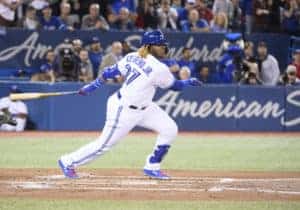
While the league scrapped its idea to enforce a new rule about when position players can take the mound to pitch, it did keep one important change to how arms will operate in a relief role. Pitchers who have made their money as lefty specialists over the years have to be facing an existential crisis, as the league has implemented a rule stating that each pitcher that comes into the game must face a minimum of three hitters. This destroys the idea of a pitcher whose only purpose is to face a single hitter in a high-leverage situation. It should also cause some interesting bumps to reliever ratio stats.
By far the most impactful change for DFS purposes will be the implementation of the Universal Designated Hitter. For the first time, the National League will have a DH and we can probably expect this change to become permanent. While the National League game certainly has featured more strategy due to the lack of a DH, it just makes more sense to implement it in the modern game. The impact on National League scoring should be obvious in the numbers and we will likely see struggles from some pitchers who have gotten away with abusing eight-hitter lineups and picking up cheap strikeouts against opposing pitchers.
While the National League has closed the scoring gap over the years, the hole at the bottom of the lineup for the 2.1 plate appearances per game that were taken by National League pitchers has had an impact. Over the last 10 years, the American League has averaged .203 runs per game more than the senior circuit. The last time the National League scored more runs per game was in 1974. This should draw significantly closer in 2020 as a DH will fill more than the pitcher’s 2.1 plate appearances, they will also likely be better than the pinch hitters replacing pitchers for their final plate appearances.
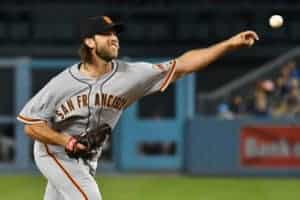
The DH will impact both the performance of lineups and starting pitchers for MLB DFS purposes. In general, we should expect to see National League ERAs rise by around the deficit in runs per game, while strikeout rates should also fall given the added quality in the additional lineup spot. Taking Stephen Strasburg as an example, the pitcher made 33 starts in 2019, facing a total of 841 hitters. Of those 841 plate appearances, 58 of them were against the opposing pitcher. Strasburg struck out 35, a whopping 60.34%, and walked only six. While 35 strikeouts don’t seem significant over the course of a season, it was enough to raise Strasburg’s strikeout rate from the 27.59% he posted against other hitters to 29.8% for the season. You can check out individual pitchers and how they have performed against fellow pitchers on baseball-reference’s excellent player splits pages.
DFS Strategy and Stats We Care About
Not All Stats Are Created Equally
Baseball is a sport that requires time to unfold and there are a lot of noisy stats and misconceptions tied up in how the game is played, coached and watched. More than any other sport, baseball is a game of numbers with a statistic for everything you can think of. Some of those are better for MLB DFS purposes than others, however. Typically we want to focus on stats that are predictive and those that boil the numbers down as best as possible to what a player’s true performance has been and “should” be.
Hitters
ISO — Isolated power is a statistic that will help determine the type of hitter you’re looking at. ISO measures the rate at which a player hits doubles, triples, and home runs and can be calculated several ways. The simplest way to think about ISO is as slugging percentage minus batting average. An ISO of .140 is about league average, while .200 or higher is likely an excellent power hitter and DFS option. ISO should not be taken entirely on its own, however, as it can misrepresent the overall quality of a player who struggles making contact, for example.
WRC+ — Weighted Runs Created Plus is a statistic that accounts for the value a player contributes to his team’s offense while accounting for on-base percentage, as well as the relative value of different types of extra base hits. The stat also adjusts for park and league context to reduce the statistic to only things within the player’s control. A WRC+ of 100 is league average, a player with a 75 WRC+ is 25% below league average, while a player with a 172 WRC+ is Mike Trout for his career.
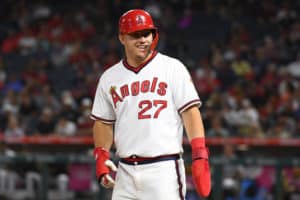
K% — Strikeout rate; simply, how frequently this player is going to strike out and cost the opportunity to score points. It is also a stat from which you can extrapolate details about a hitter’s approach at the plate and general plate discipline. Hitters become increasingly concerning the further over 20% their strikeout rate pushes.
BABIP — Batting Average on Balls in Play; this is a simple stat that can be used on both sides as a reference point for how lucky a hitter is getting. League-average BABIP is around .300, but it’s more important to pay attention to a player’s individual history with this one. If a career .250 hitter is suddenly hitting .300, but it’s supported by a massive BABIP, it’s somewhat safe to anticipate a collapse.
With the emergence of advanced measurement technology, we can include additional details like barreled balls and rates for hard contact, but as you add statistics you potentially add noise. The best models will regress hitting statistics to a standard of 1,000 or more plate appearances, which is the minimum point at which baseball statistics truly become reliable.
Pitchers
FIP/xFIP — Forget everything you know about earned run average and start using FIP, or better, xFIP. This stat measures Fielding Independent Pitching, an effort to remove all defensive and luck-based factors from a pitcher’s performance and only focus on the things within that pitcher’s control. The goal of FIP is to provide a view of what a pitcher’s ERA “should” be if those things weren’t a factor. xFIP takes this a step further by attempting to normalize home run rates, which are typically an unstable stat. Comparing a pitcher’s FIP or xFIP to his ERA is a good way to measure a pitcher’s quality against his noisy statistical results. A pitcher with a 4.65 ERA but a 3.65 FIP is doing better than defense and luck are allowing him to in the box scores.
K%, BB%, K-BB% — These stats measure the rates at which a pitcher either strikes out or walks hitters and how those rates compare to one another. Strikeouts and walks are the two outcomes a pitcher has the most control over in every plate appearance and a high strikeout rate with a low walk rate is an excellent indicator of quality. A strikeout rate of 20% and a walk rate around 7.7% are league average. Pitchers with strikeout rates above 25% are excellent DFS targets and are typically among the most expensive starters on the slate. K-BB% measures the number of strikeouts a pitcher generates for each walk.
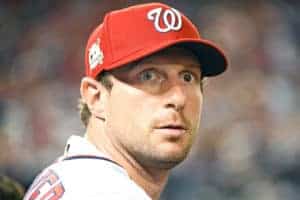
WHIP — WHIP should be familiar for most fantasy baseball enthusiasts; it simply measures the amount of opportunity that a pitcher allows. Walks plus hits divided by innings pitched will tell us everything we need to know about how frequently a pitcher allows baserunners. League average is around 1.30 for starters and anyone in 1.00 territory or below is having an outrageously good year.
Sample Size and Ignoring Batter vs. Pitcher
With all these stats one of the most important things to remember is sample size. Baseball more than any other sport requires a gigantic sample of games and plate appearances before it will reveal itself. The nature of the sport is such that if a hitter does his job right just a third of the time, he’s probably going to Hall of Fame. You need a career to get the full measure of a hitter, not a random sampling from a point or points in their career. This is why batter vs. pitcher (BvP) statistics are nonsense and should be ignored entirely for MLB DFS purposes.
There simply are no cases in which we have enough plate appearances of one hitter against one pitcher to allow us to say anything is true about the matchup. DFS players and baseball people in general love to talk about how a hitter “owns” a pitcher or vice versa, but most of what they’re looking at is noise from a ludicrously small sample that most likely just represents baseball happenstance. While it would be foolish to suggest that hitters don’t see the ball better with some starters’ delivery as opposed to others, or simply have a feel for what a pitcher is likely to throw, it’s equally foolish to attempt to suss any of that out in statistics without a thousand or so data points, and no batter vs. pitcher matchup will ever get to that level. The best that the BvP crowd can hope for is anecdotal evidence and guesswork. You’ll do a lot better relying on data and statistics.
Stack, Stack and Stack Some More
There’s no argument here; stacking is king in MLB DFS. With the highly variable way that baseball scores on the field, it is important to attempt to corral as much of the scoring related to batted ball events as possible. This means playing multiple hitters from a team’s lineup in the hopes that the rising tide of one hitter will lift the proverbial boats of those close to him in the lineup. This doesn’t mean that you simply mash together whatever guys from the same team you can afford, however. The value is in playing bats that correlate strongly with one another. A seven hitter is only going to have so much impact on the scoring of a two hitter, for example, whereas a one and two hitter are the highest-correlated pairing available.
On average, most of your fantasy scoring will come from early lineup spots. Not only are these typically a team’s best hitters, they also receive the most opportunities as the game progresses. The top five hitters in the lineup will typically receive more than four plate appearances per game, while the eighth and ninth hitters are both more likely to be pinch-hit for and less likely to have their spot in the lineup come up again late in games, unless the rest of the team has been productive, at which point they are probably outscoring him anyway.
For this reason, the focus of your stacks should typically be on the top of a lineup. Hitters one through five are going to be the meat of most orders, with the sixth and seventh hitters providing additional power and picking up opportunities to drive in runs despite the reduced number of plate appearances.
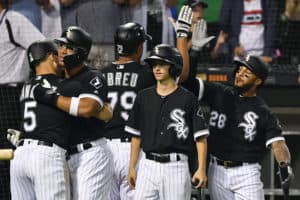
Stacking from the top spot in the lineup down through five on DraftKings, or four on FanDuel, is a sound but basic approach. Doing this with the most popular teams will just result in duplicated lineups, so it will be important to utilize Awesemo’s top stacks tool throughout the season to help you identify the teams that are both highly probable to be the best stack of the night and also projected for low ownership. Typically, the difference in popularity between the top stack and the third stack on the slate is significant. On many nights you can find an edge simply in a lack of separation between stack rankings. When game totals are similar, the probabilities of success will be more tightly grouped, likely resulting in imbalanced ownership on a stack that might rank seventh out of 12 but is only two percentage points lower than the third-ranked team while pulling half the ownership.
If you’re used to NBA or NFL DFS, stacking is going to take some getting used to. Baseball simply doesn’t operate like other sports, particularly the NBA, where you want to find the best combination of all players for the salary that you have available. In fact, it will often be advisable in MLB DFS to leave some of that salary on the table, potentially in amounts that will, at first, make you uncomfortable. The purpose in MLB DFS is not to get to the highest projected point total, but to build lineups of players who are carrying good projections (“are in a good spot”) and correlate well together in a lineup, regardless of their pricing.
Stack ranking, batting order and ownership projections are the three most important tools to use when building your stacks. Awesemo recommends stacking and that players stack two teams together, on DraftKings this can be done in a 5×3 configuration and on FanDuel as a 4×4, or varying combinations of smaller stacks. Maximizing opportunity, correlation and ownership leverage is a major key to winning a GPP in MLB DFS.
Pitcher Selection
Selecting a starting pitcher or starting pitchers, depending on your site of choice, is a critical component of MLB DFS. Most slates will offer a wide selection that ranges from a very expensive and very popular ace like Max Scherzer or Jacob deGrom to very cheap bargain basement plays. Either can win you money on the right night. On FanDuel, you only get one bullet at pitcher and there is a bonus for a quality start, while DraftKings rosters two starters and deducts points for hits allowed, making for very different scoring.
On DraftKings, it typically makes sense to pay up for one of your two starting pitchers and, if necessary, eat some chalk. Ideally, you will get to a lower-owned option among the high-end starters in this spot for most of your lineup shares though. The second starting pitcher spot is a strong place to find lineup differentiation as well as savings. If you can identify strong value starters on the board, it can provide a leg up in getting to stack combinations that others aren’t able to easily afford by the time they get to bats. On FanDuel, you can play either the high-end starter game or fish for a discount, either strategy is sound, and it truly depends on the specific slate. On either, rostering pitchers with strong strikeout rates is a smart approach.
For more directly from Awesemo, make sure to check out his MLB DFS Primer. We’ll continue the MLB Cram Session tomorrow with Part 2 where we look through team rosters for bats and stacks before we wrap up with pitchers on Wednesday then dive into the season headfirst on Thursday.
Follow us on all of our social channels! Check out our Twitter, Facebook, Instagram and YouTube for more great Awesemo content.



